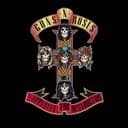The G Major Pentatonic Scale follows the interval formula W-W-W½-W-W½ (whole-whole-minor third-whole-minor third), translating to 2-2-3-2-3 semitones between consecutive notes. Built from the parent G Major Scale (which contains one sharp: F♯), it uses only scale degrees 1-2-3-5-6 (G-A-B-D-E), strategically omitting the 4th degree (C) and the 7th degree (F♯). This omission eliminates the two notes that create tension in the major scale—the C would form a half-step with B, and the F♯ functions as a leading tone demanding resolution to G. By removing these potentially dissonant notes, the pentatonic scale creates a melodic framework where all five notes sound harmonious over the tonic G major chord and common I-IV-V progressions (G-C-D). The resulting interval structure features two minor thirds (B to D, E to G) that give the scale its characteristic open, spacious quality—a sound deeply rooted in folk traditions, Celtic music, bluegrass, and country songwriting across generations.
Why G Major Pentatonic is Perfect for Guitar
The G Major Pentatonic Scale has earned special status among guitarists because it leverages the instrument's natural tuning and open string resonance. With three open strings (G, B, and high E) all being notes within the scale, players can create fuller, more resonant phrases that blend fretted notes with ringing open strings—a technique fundamental to folk fingerpicking, country lead playing, and Celtic guitar styles. The scale's box patterns align ergonomically across the fretboard, with the most accessible position starting at the 3rd fret (G root on the 6th string), allowing seamless improvisation and position shifts throughout the neck. Guitar legends like Chet Atkins, Mark Knopfler, and James Taylor have exploited this key's natural resonance in countless iconic songs, while rock and country players favor it for its bright, uplifting character in solos over major progressions. Unlike C Major Pentatonic or D Major Pentatonic, which require more fretted notes, G Major Pentatonic's integration with open strings creates a distinctive, full-bodied sound that defines the guitar's folk and country voice.
Practical Applications for Piano and Guitar
The G Major Pentatonic Scale functions beautifully over I-IV-V progressions in G major (G-C-D chords), where every note remains consonant regardless of the underlying harmony—making it ideal for improvisation in country, folk, pop, and rock contexts. When soloing, emphasize the root (G), major third (B), and fifth (D) on strong beats to outline the tonic chord, then use A and E as melodic color notes or passing tones that add movement without creating harmonic tension. Piano players should practice the scale hands separately first, mastering the fingering patterns (right hand: 1-2-3-1-2; left hand: 5-4-3-2-1) before combining hands in parallel and contrary motion to develop coordination. Guitarists can explore the five pentatonic box positions across the fretboard, starting with the open position that incorporates the open G, B, and E strings, then progressing to the closed positions at the 3rd, 5th, 7th, and 10th frets for position-shifting solos. The scale serves as the melodic foundation for countless folk melodies, country licks, and bluegrass improvisations—from traditional Irish jigs to modern country-pop radio hits that rely on its universally appealing, bright character.
Scale Relationships and Theory Connections
The G Major Pentatonic Scale maintains a special relative relationship with the E Minor Pentatonic Scale, sharing identical notes (G-A-B-D-E) but establishing different tonal centers—G as the root creates a bright, optimistic sound, while E as the root produces a darker, more introspective minor quality. This parallel relationship mirrors the connection between G Major and E Natural Minor, but with the harmonic complexity reduced from seven notes to five for maximum consonance. The scale also relates closely to other commonly used pentatonic scales in guitar-friendly keys, including D Major Pentatonic (two sharps) and C Major Pentatonic (no sharps), creating a family of related scales that appear frequently in folk, country, and Celtic music traditions. Many guitarists blend G Major Pentatonic with its parallel minor—G Minor Pentatonic—over blues and rock progressions to create major-minor modal mixture effects, adding bluesy color while maintaining the brighter major foundation. Understanding these relationships unlocks sophisticated improvisation possibilities and reveals why certain chord progressions and melodies feel naturally interconnected across different keys and modes.





